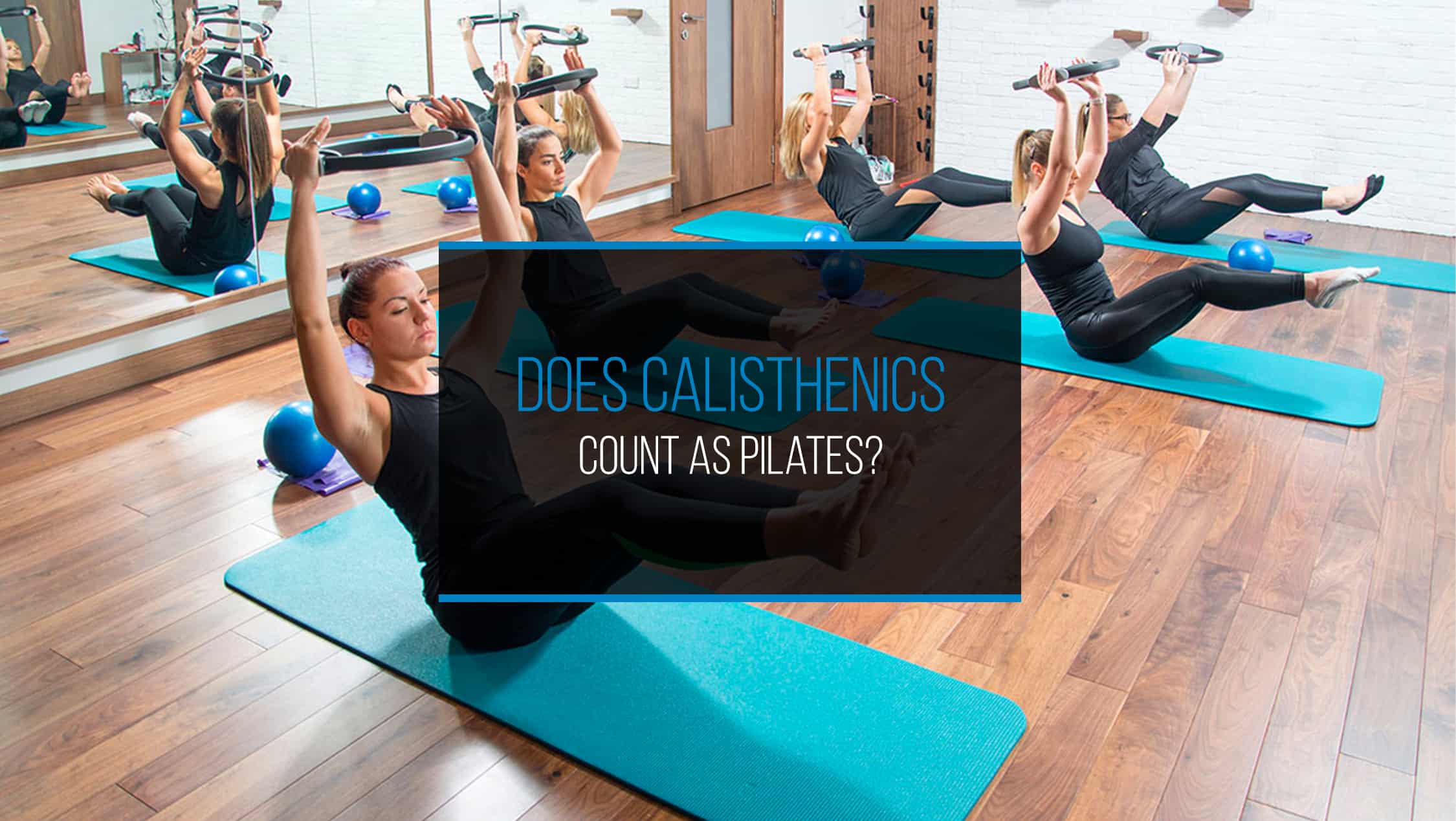If you’re considering a new exercise routine to improve your muscle tone, flexibility, and overall strength, both calisthenics and Pilates could be an excellent choice, but do they count as the same thing?
The quick answer is that although calisthenics and Pilates provide similar physical benefits, their general principles differ. Pilates concentrate on core strength exercises combined with breathing. In contrast, calisthenics combines well-known exercises (such as push-ups and squats) to increase strength in all major muscle groups.
Read on to learn much more about why calisthenics and Pilates are different, including the principles of each discipline, physical benefits, equipment required, suitability for the individual, and cost.
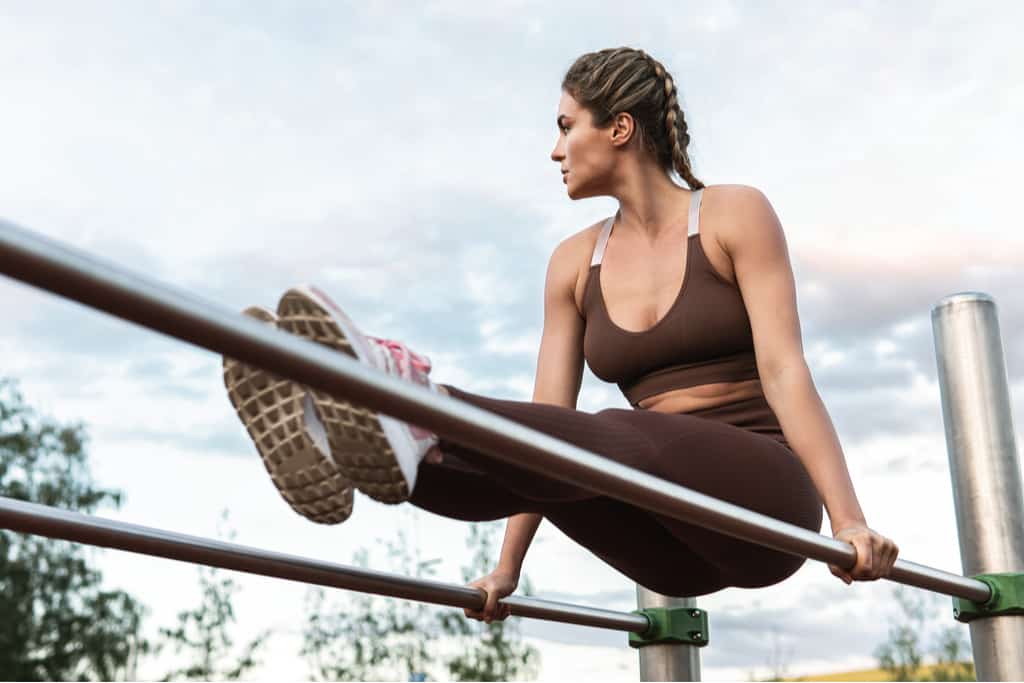
Principles of Calisthenics
Before explaining the key differences between calisthenics and Pilates, it helps to understand the principles of each kind of exercise.
Starting with calisthenics — this is a form of physical activity involving various bodyweight exercises that can be performed without equipment or with minimal equipment, such as a pull-up bar. Calisthenic exercises are used to develop strength (in major muscle groups) and also help to improve endurance, flexibility, and coordination.
Calisthenics is one of the most well-known forms of exercise, although many people complete calisthenic style workouts in the gym or at home without knowing the actual name of the activity.
Some of the most popular calisthenics exercises include pull-ups, push-ups, squats, lunges, and planks. These exercises can be performed anywhere, making calisthenics a convenient and accessible training for people of most fitness levels.
Some calisthenic workout classes also focus on rhythm and flow, which can help make the exercises more dynamic and exciting.

Principles of Pilates
Pilates is a method of exercise that focuses on controlled, precise movements to improve physical strength, flexibility, posture, and toning. The principles of Pilates are based on Joseph Pilates’ belief that proper alignment and control of the body can lead to improved overall health and even help with recovery from certain injuries.
The exercises used in Pilates are proven to improve both physical and mental health because they also focus on breathing, similar to the techniques used in mindfulness. Based on these principles, Pilates is most commonly compared to yoga.
Pilates is suitable for beginners and can be done at home using only an exercise mat. For those looking for a more complex pilates workout, group classes are available in most gyms or fitness centers and may include the use of equipment (which we’ll explain in more detail later on).
Similarities Between Calisthenics and Pilates
Although calisthenics and pilates can’t be considered the same, they have some basic similarities, including:
- Calisthenics and pilates both predominately use body weight for resistance.
- They both require little to no equipment (although equipment is often used in gyms or classes for certain movements or exercises).
- Both forms of exercise improve strength and muscle tone.
- They can improve heart health and overall fitness.
- They can help to improve sleep.
- Calisthenics and pilates can be done at home without paying for gym memberships.
- Neither is considered to be a form of cardio exercise.
Differences Between Calisthenics and Pilates
We’ll now move on to the differences between calisthenics and Pilates, including physical benefits, exercise differences, equipment, suitability, and cost.
Physical Benefits
Calisthenics and Pilates provide many physical benefits, including improving core strength, toning, flexibility, and general well-being.
While calisthenics focuses on core strength and major muscle groups throughout the body, the main focus of Pilates is core strength, including the abdomen, spine/back, thighs, and buttocks.
The physical benefits you get from calisthenics depend on the combination of exercises used in a routine. If you regularly complete a range of exercises using various body areas, you can expect to see improvements in strength over all major muscle groups.
One of the main physical benefits seen in those who regularly follow a Pilates exercise routine is an improvement in core strength, which helps improve overall posture.
Because of the potential improvements to posture, Pilates is often used to help people with joint problems and those who need to maintain flexibility.
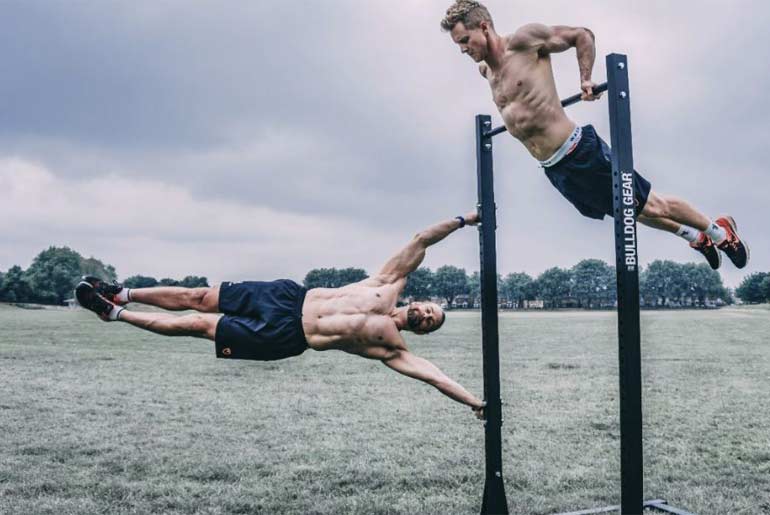
Exercise Differences
One of the main differences between calisthenics and Pilates is the exercises typically used in a workout. Calisthenics exercises focus on all major muscle groups, while Pilates concentrates on the core.
The kinds of exercises used in a calisthenics workout are very familiar and often used in home and gym workouts. Together, they can help achieve a full-body workout that strengthens all major muscle groups.
Common exercises that are used in a calisthenics workout include:
- Squats & squat jumps
- Push-ups
- Lunges
- Sit-ups & crunches (with legs bent or straight)
- Burpees
- Chin-ups/Pull-ups (using a bar)
- Plank
- Dips
- Handstands
- Leg & calf raises
Because Pilates focuses on core strength, many exercises in a set workout focus on muscles in the abdomen, inner and outer thighs, buttocks, lower back, and spine.
Below are some of the most common pilates exercises used in a workout, all of which incorporate focused breathing as part of the exercise:
- Leg lifts (up and to the side)
- Leg stretches
- Criss-cross
- Plank (sometimes including leg lifts and rocking)
- Mountain climbers
- Toe tap
- Leg circle
- Side bend
- Side kick
- Swan dive
- Bird dog
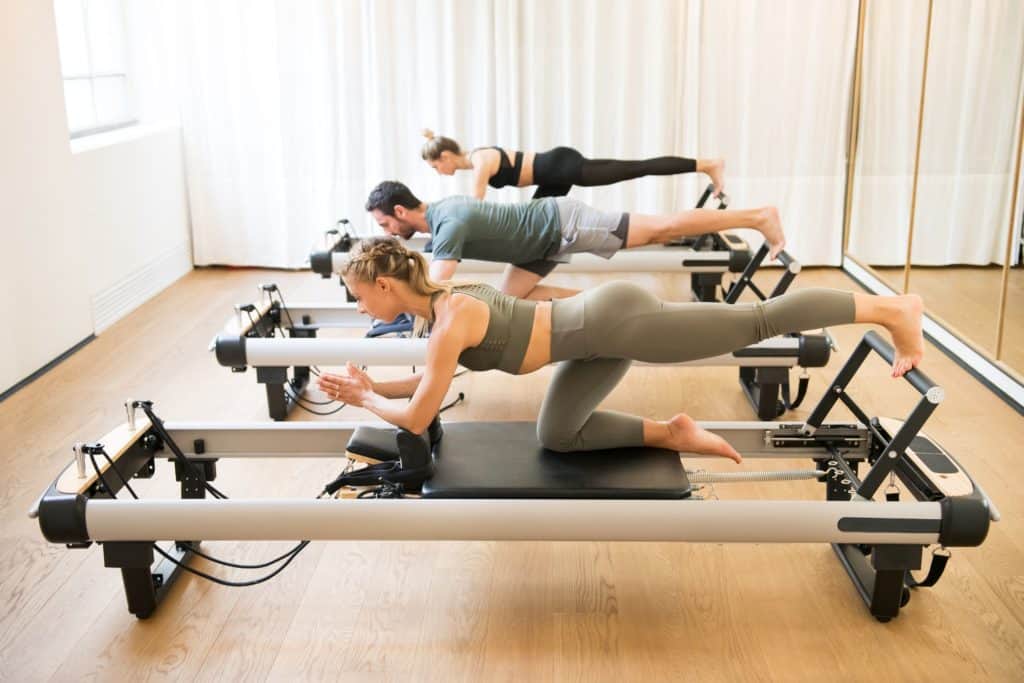
Equipment Differences
Calisthenics and Pilates can both be performed without any equipment. However, it’s recommended that as a minimum, you’ll need an exercise mat, especially for Pilates, which requires a lot of floor work.
Both kinds of exercise, especially calisthenics, rely on a person’s body weight being the force to strengthen rather than physical weights.
Equipment can be used for some calisthenics exercises, the most common being pull-up bars, monkey bars, and parallel or Parrallette bars, which you can usually find at most indoor and outdoor gyms.
For those who like to work out at home and prefer not to use equipment due to budget or space issues, there are plenty of calisthenics exercises that can be performed without equipment.
Most basic pilates workouts don’t require equipment, but if you attend a pilates class, you might need a gym (or yoga) ball and resistance bands to help with certain moves.
Advanced pilates studios sometimes use a piece of equipment called a ‘reformer,’ which is a flat bed or table with sliding elements and pulley systems that assist with certain moves and stretches.
This is an optional piece of equipment that has become increasingly popular in pilates centers and gyms in recent years.
Suitability
One thing that should always be considered before trying a new exercise is whether it’s appropriate for the individual. Suitability should be based on factors such as ability, age, and previous injuries.
Although calisthenics and Pilates use different exercises, both can be adapted to fit the individual’s needs, from beginner to advanced.
Calisthenics is more suited to stronger individuals who can do strength exercises such as push-ups and sit-ups, although you can start with more simple exercise choices and build up the number of repetitions over time.
Pilates exercises are suitable for those at any level because simple moves and breathing exercises are perfect for beginners who don’t have the strength to try more complex movements when they first start.
It was initially developed (in the early 20th century) as a recovery method for injured dancers who needed to improve strength, posture, and flexibility in the core area. Pilates is still used as physical therapy for similar injuries and joint problems in the modern-day, making it an excellent exercise choice for those who need low-impact exercise.
On the other hand, Pilates is still good for those looking for something a little more challenging and want to try more complex movements.
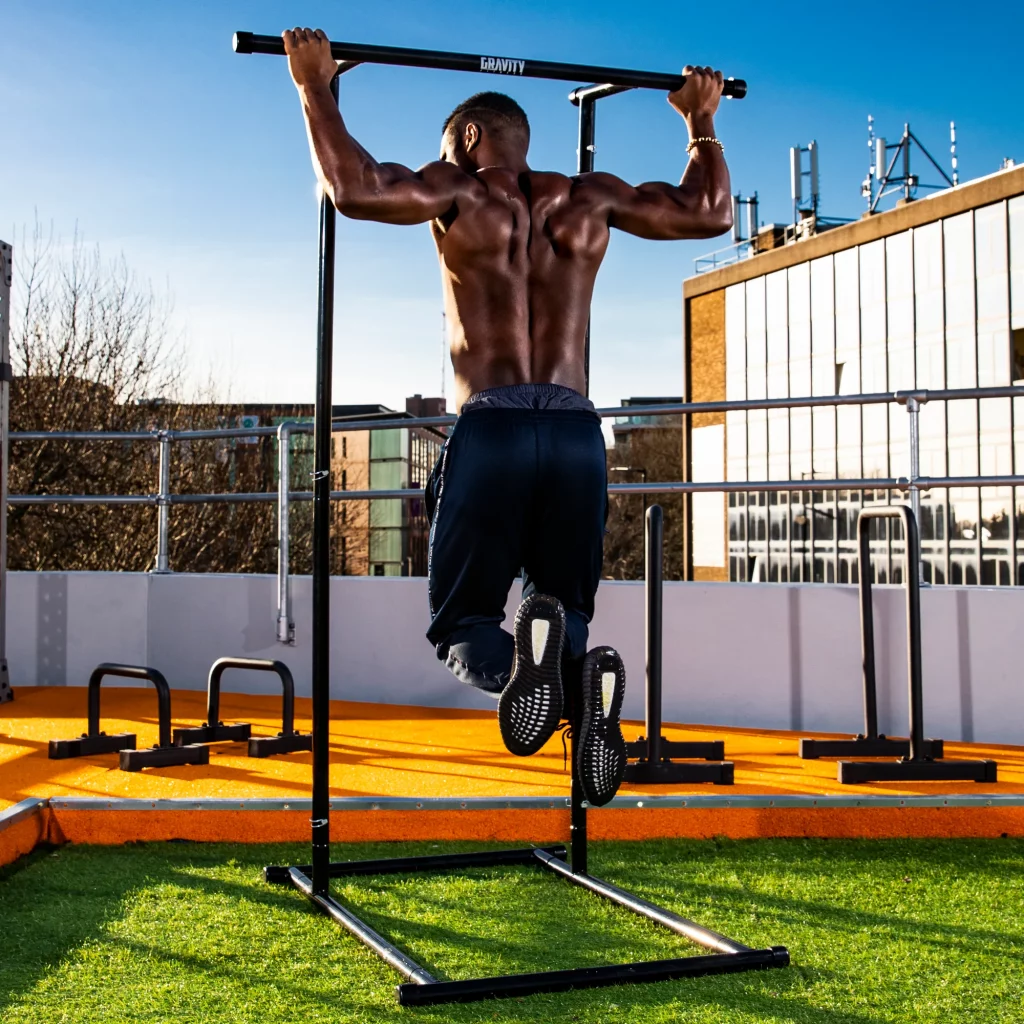
Cost Differences
Another consideration for many when choosing a new kind of exercise is the cost, so let’s take a look at a cost comparison between calisthenics for home equipment versus gym costs.
Calisthenic Equipment Costs
If you’re on a budget or don’t want gym equipment cluttering your home, you can start doing calisthenic workouts anytime for free in your home or backyard.
There are plenty of free YouTube workout and tutorial videos to choose from, so you can pick the ones you like best that don’t rely on the use of expensive equipment. There’s also the option of using free park gyms, which usually have all kinds of calisthenics equipment, including bars for pull-ups.
If you’re looking to kit out your home gym or workout space with equipment to help with your calisthenic workout, here’s a list of the average costs for each type of equipment:
Calisthenics Equipment TypeAverage CostDoor frame pull-up bars$80Free-standing pull-up bars$500-600Mounted pull up-bars$200-300Parrallette bars$50-100Parallel bars$100-200Exercise mat$25-50
Please note that these costs are based on averages, so prices will vary depending on where you look. Generally, better quality, sturdier equipment such as pull-up bars are at the higher end of the price scale.
Calisthenic Gym Costs
If you prefer going to the gym to working out at home, you can do calisthenic workouts in pretty much any gym or fitness center. Most gyms are kitted out with any equipment you might need to do a full calisthenic workout, but it’s a good idea to ask for a tour to ensure they have everything you need.
Calisthenic gyms are also dedicated to calisthenic workouts; these are great if you want to connect with others or get expert advice.
The average yearly gym subscription in America costs around $700-800 (or $58-$67) per month, and choosing the gym option means you don’t have to outlay money on expensive equipment.
Pilates Equipment Costs
If you’re on a budget, you can do pilates workouts at home by following exercise tutorials online for free. Equipment isn’t essential, but you might need an exercise mat to ensure that you’re comfortable and supported during floor-based exercises.
You might also need a yoga ball or resistance bands as the exercises become easier and you need more of a challenge. The table below shows the average costs of various items of Pilates equipment:
Pilates Equipment TypeAverage CostExercise mat$25-50Exercise (yoga) ball$20-30Pilates reformer$1000-1500Bar kit and resistance bands$25-30
Pilates Workout Group Cost
Most larger local gyms and fitness centers run pilates classes. Special pilates centers usually provide more complex equipment such as reformers and other balance equipment. You can also get private pilates lessons, which are good if you’re starting out or are looking for a more personalized workout.
Session prices vary depending on where you live and the kinds of equipment provided. For a standard pilates group class (using mats only), you can expect to pay around $15-20 per session, and for groups using more complex equipment, it will cost about $30-50.
Private pilates lessons can cost anywhere from $50 to over $200, depending on the instructor and equipment.
Which Costs The Most?
Based on the information above, I can confirm that both calisthenics and Pilates can be done at home for little to no cost. But things can get a little pricey when it comes to buying equipment, going to the gym, or attending a class.
Of the two, calisthenics is a cheaper option than Pilates if you prefer going to the gym, and for your yearly or monthly gym fee, you can go as much as you like and complete your workout using the available equipment.
In contrast, Pilates is usually a group session that is relatively more expensive because sessions are not unlimited and generally only happen once per week. You can also expect to pay much more if they’re providing the use of a reformer or other specialist equipment.
When it comes to buying equipment at home, Pilates is probably the cheaper option unless you decide to buy a reformer, in which case, a good one can set you back over $1000.
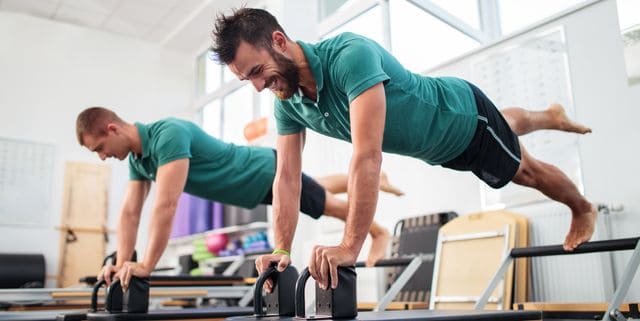
Choosing Between Calisthenics and Pilates (A Summary)
If you’re trying to decide between calisthenics and Pilates and you’re not sure which kind of exercise will be best for you, it really comes down to which you think you will enjoy the most and which is going to be more suited to your abilities.
Ultimately, they are both forms of exercise designed to help improve your strength, muscle tone, fitness, and flexibility. So although the exercises are different, the overall outcome will be rewarding.
Pilates may be the better option for those looking to improve strength and posture or are suffering from certain kinds of injury (but check with your doctor first). However, calisthenics is an excellent choice for anyone looking to strengthen all muscle groups.

